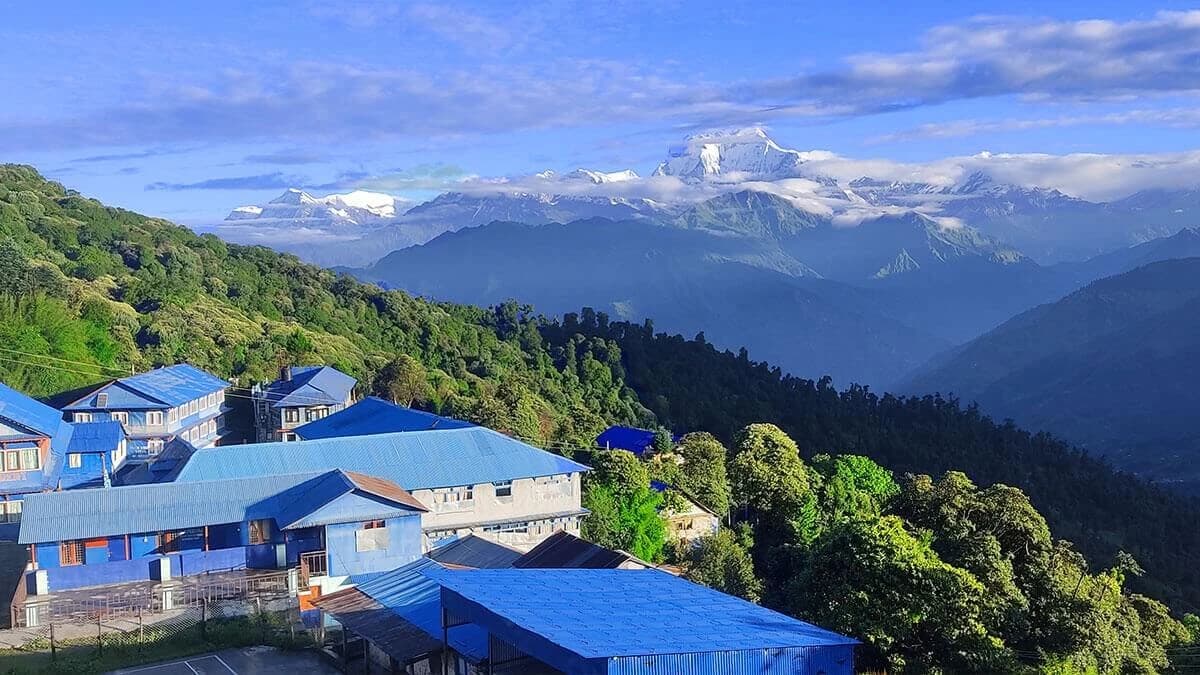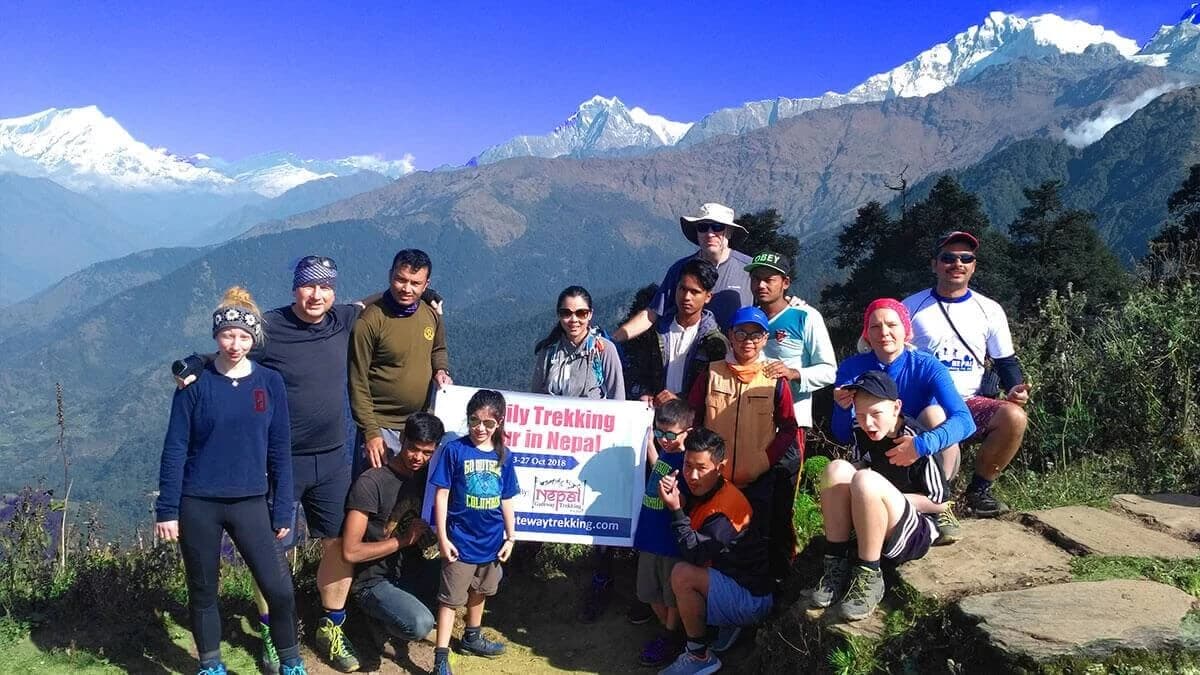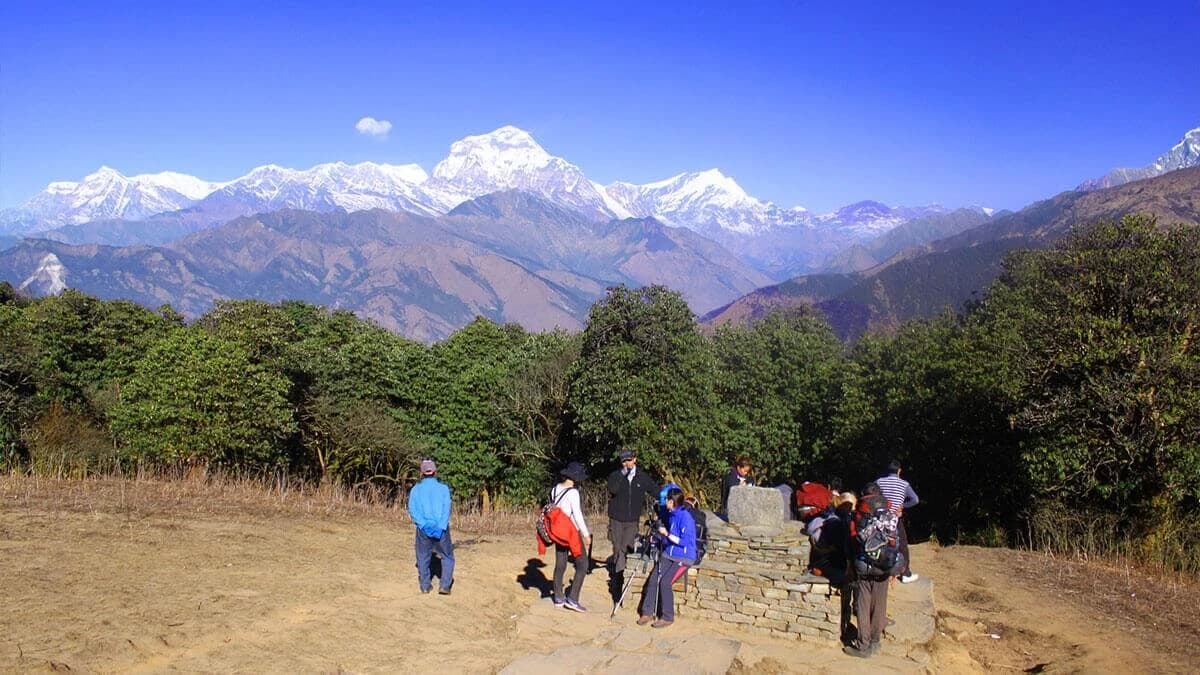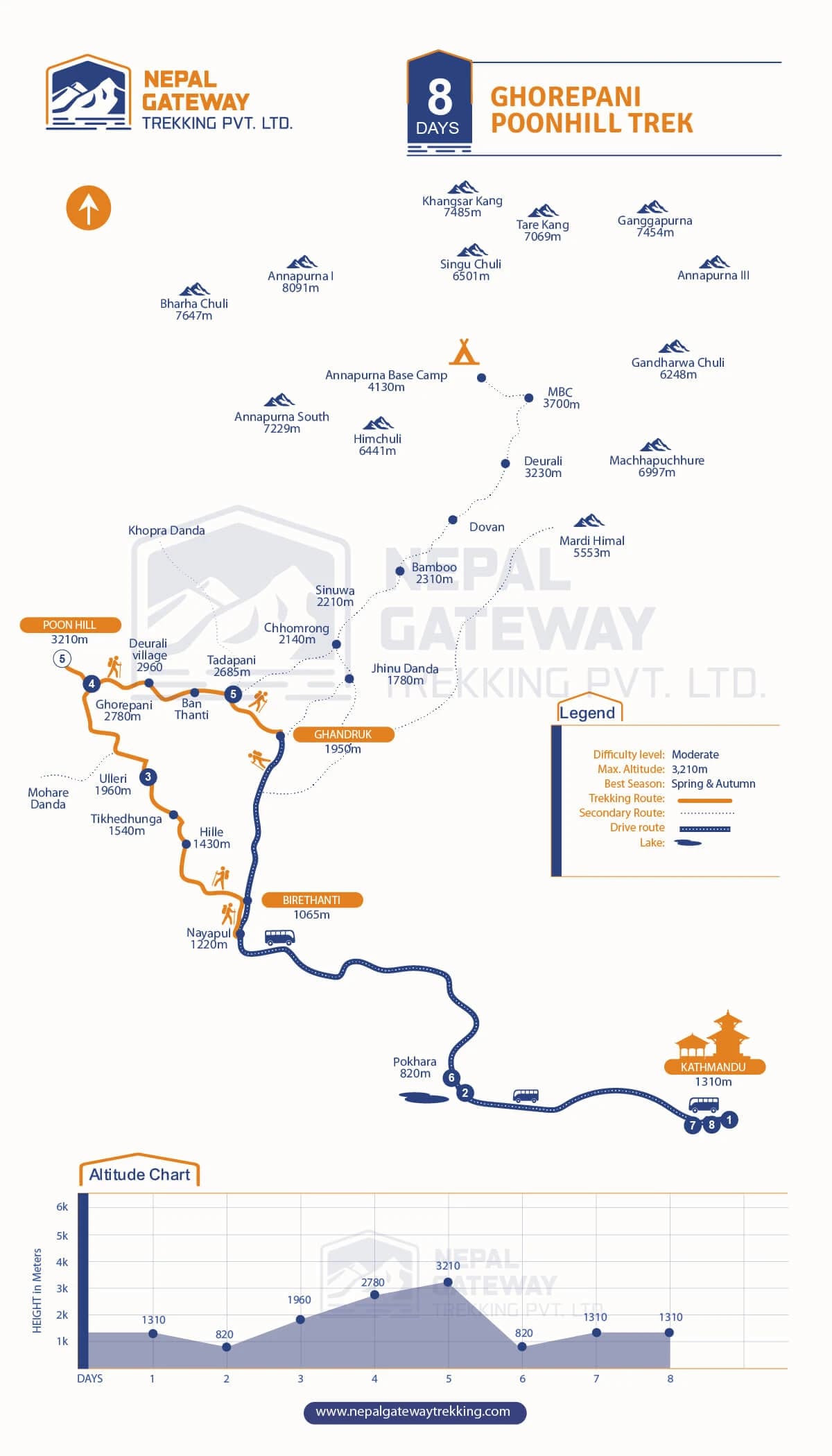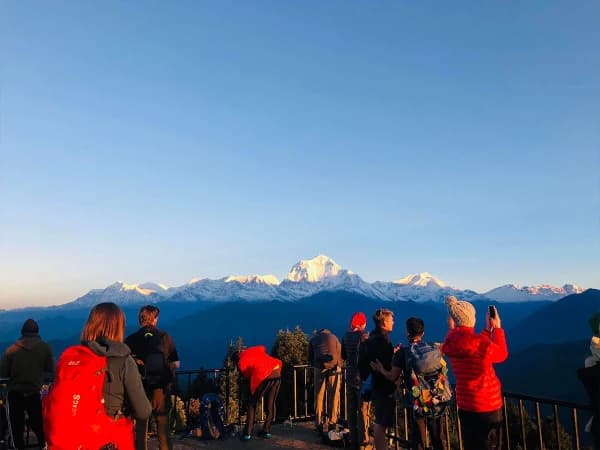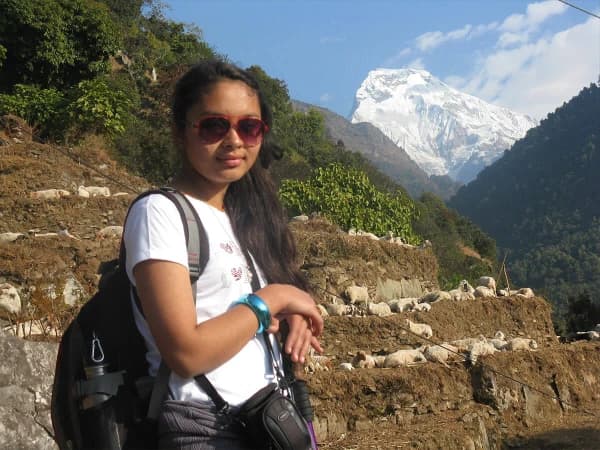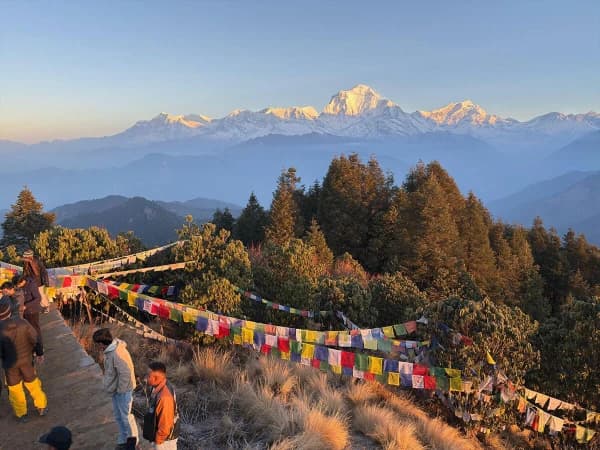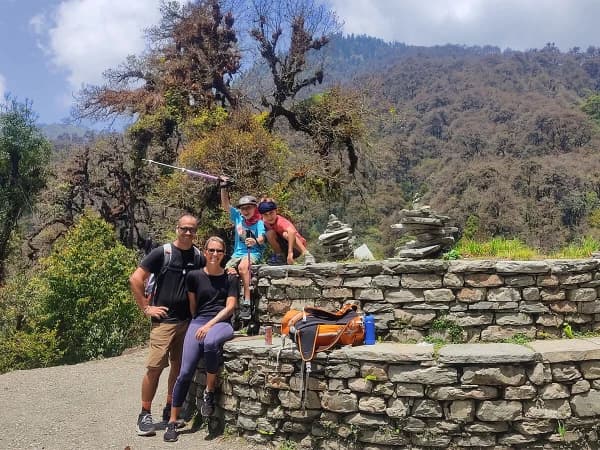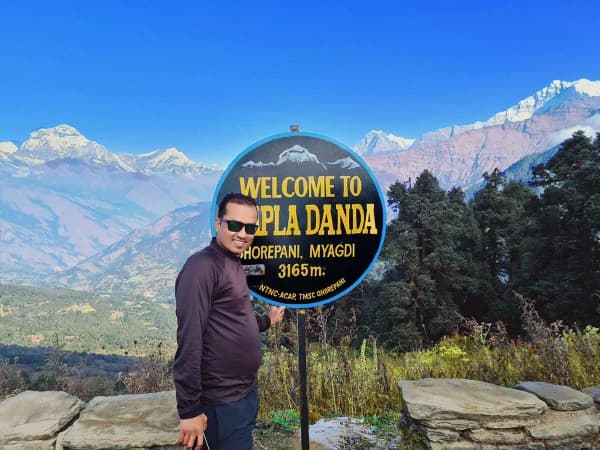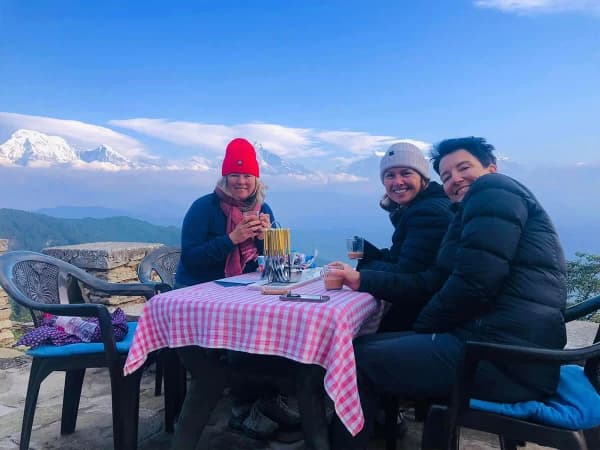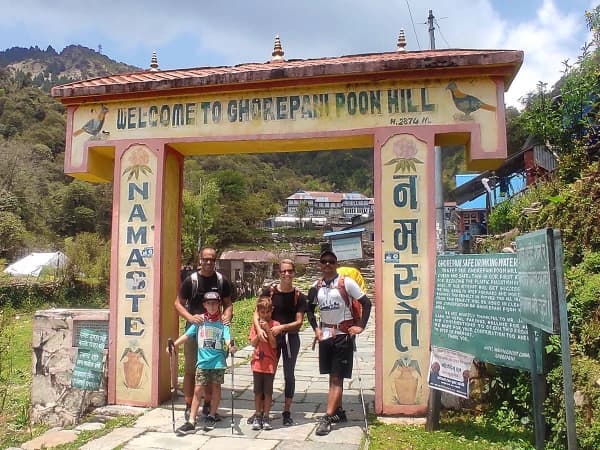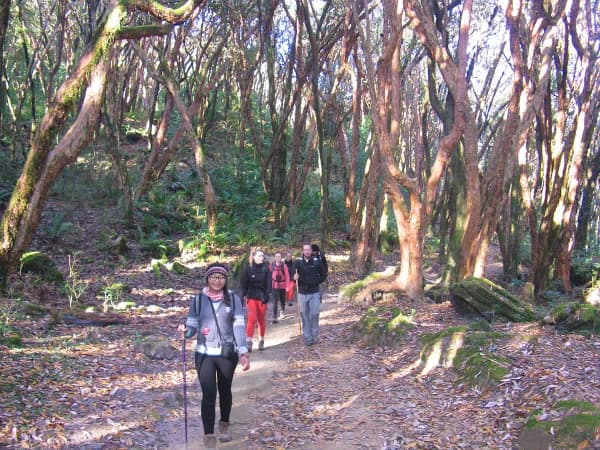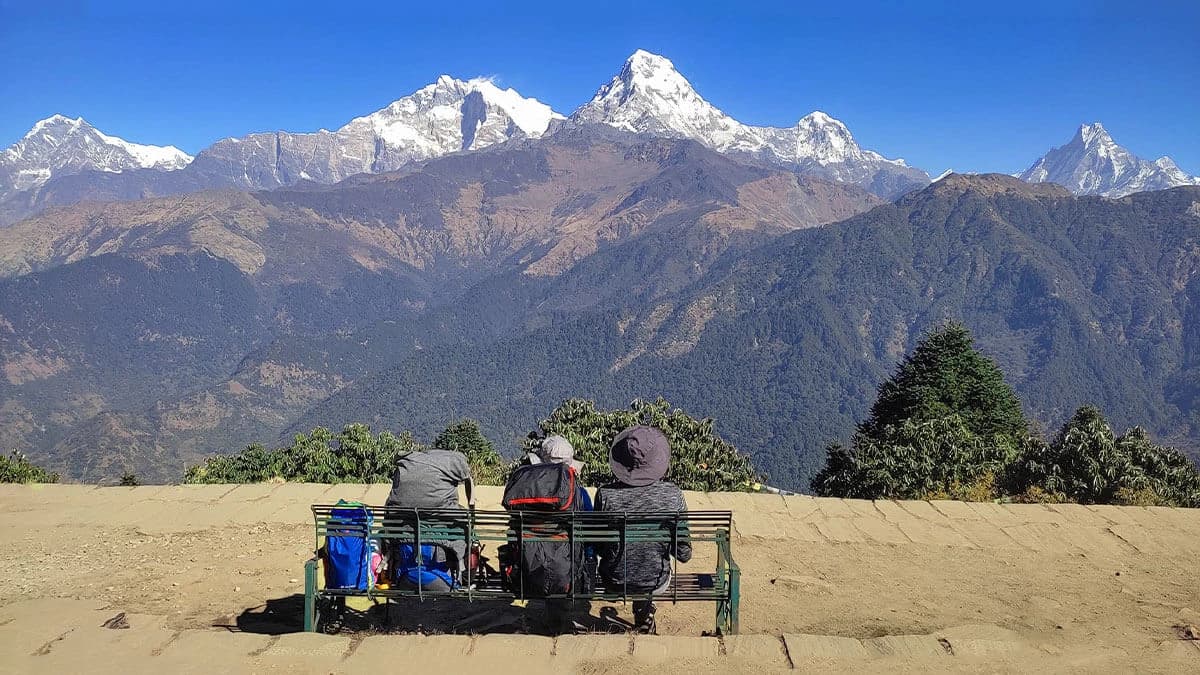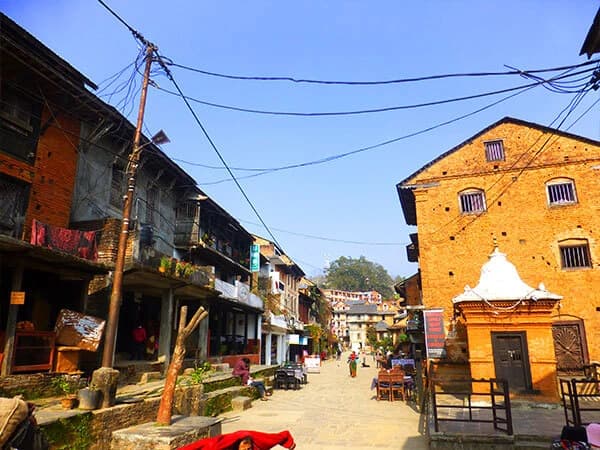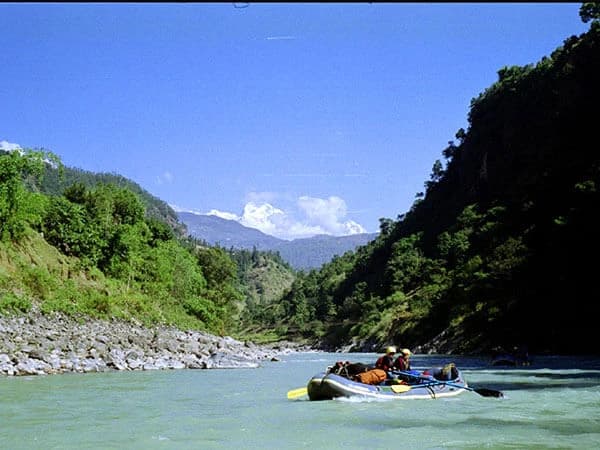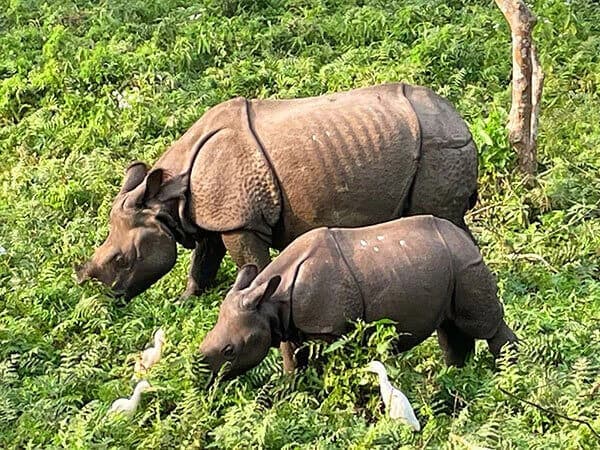Ghorepani Poon Hill is an excellent short and easy trek to the Himalayas of Nepal. This trek is suitable for people of all experiences and age groups, specifically for families and novice travelers.
Ghorepani Poonhill Trek
Ghorepani Poonhill Trek is perhaps the best short trek in the Himalayas of Nepal. It is renowned worldwide for its extraordinary natural wonders, picture-perfect mountain scenery, and unique cultural experiences. This epic 8-day adventure takes you across the heart of the Annapurna region to discover its most spectacular sights. The trek includes colorful villages, rhododendron forests, mighty waterfalls, steep-sided valleys, and stunning mountain panoramas.
Historically, the trekking trail of Ghorepani Poon Hill was once an ancient trade route that connected the lowlands of Nepal with Tibet. The name “Ghorepani” was coined by the ancient traders who used the place as a rest stop to water. The real name of the town was Ghodepani. Ghoda means horse, and water means paani in Nepali.
The highest elevation point of the trek is 3,210 meters at the summit of Poon Hill. Poon Hill is very famous for the sunrise view, probably one of the best sunrise viewpoints in Nepal. This famous viewpoint offers a panorama of some of the world’s highest mountains, including the Dhaulagiri and Annapurna ranges. You can see the massive Mount Dhaulagiri (8,167 m), known as the White Mountain of Nepal, and Annapurna I (8,091 m).
The views of Nilgiri, Annapurna South, Machhapuchhre, Hiunchuli, Tukuche Peak, and Dhampus Peak are the highlights of the trek. Walking through deep rhododendron forests in the spring season is so beautiful. The Ghorepani Poon Hill Trek lies within the Annapurna Conservation Area (ACA). Therefore, it provides an excellent opportunity to witness various wildlife and birds along the route.
If you’re lucky enough, you can catch sight of wildlife such as the gray langur. Likewise, you can spot several species of birdlife, such as the Himalayan Monal, Blood Pheasant, and Kalij Pheasant.
The Major Highlights of Ghorepani Poon Hill Trek
- Enjoy the best panoramic views of Annapurna I, Dhaulagiri, Annapurna South, Machhapuchhre, and Hiunchuli from Poon Hill View Tower.
- Stunning view of Mount Fishtail (Machhapuchhre, native name) from Fewa Lake.
- Relish the spectacular sunrise from the summit of Poon Hill, with golden sun rays glistening over the snow-covered mountain range.
- Trudge through the dense rhododendron forests and witness their full bloom in red, pink, and white during spring.
- Wander around the streets of Pokhara and spend some relaxing time at the shore of Phewa Lake.
- Visit the old Gurung Museum in Ghandruk and learn about the authentic culture, centuries-old traditions, and rich history of the Gurung community.
- A short and easy trek, suitable for travelers of all age groups and experience levels.
Ghorepani Poon Hill Route Overview
The journey of the Ghorepani Poon Hill Trek begins with a picturesque 7-hour drive from Kathmandu to Pokhara. Pokhara is a very beautiful city with a lake and surrounding mountain views. The 200-kilometer drive brings a unique perspective and diversity, taking you through the countryside settlements. The highway passes local bazaars, roadside tea shops, lush terraced fields, and pristine rivers.
The following day, you’ll take an hour-long drive from Pokhara to the trailhead at Nayapul. After gearing up, you’ll start the trek with a gradual walk from Nayapul towards Tikhedhunga. After a short rest, you’ll continue the trek on steep stone staircases towards your first overnight stop at Ulleri.
You’ll begin the walk from Ulleri on a relatively gentle path under the shades of rhododendrons, fir, and birch. You’ll pass a few settlements, including Banthanti and Nangethanti, before emerging to reach the overnight destination at Ghorepani. Here, you’ll relish the stunning views of Annapurna I and Dhaulagiri.
You’ll start the day before the first light and hike to the famous viewpoint of Poon Hill at 3,210 meters. The summit offers a spectacular panorama of the snow-covered mountains. Moreover, the sunrise from Poon Hill is one of the most memorable experiences. You'll see the entire Himalayan range glistening with vibrant hues of the golden sun rays.
After spending some time at Poon Hill, you’ll retrace the route back to Ghorepani. Heading from Ghorepani, the trail becomes steep and strenuous towards the Deurali Pass. Crossing the pass, you’ll continue the gradual walk towards Tadapani for an overnight stay.
From Tadapani, you’ll descend towards the traditional village of Ghandruk. Here, you’ll visit the old Gurung museum and soak in the cultural experiences. You have lunch at the village before catching a local jeep to Pokhara. The following day, you’ll take a bus back to Kathmandu and conclude the Ghorepani Poon Hill Trek.
Why Ghorepani Poon Hill Trek with Nepal Gateway Trekking?
- Nepal Gateway Trekking has been operating the Ghorepani Poon Hill Trek for over a decade. Over the years, we have refined the trek itinerary to ensure our guests get the best mountain experience.
- We provide all the necessary support at every point of the trek to ensure your trek is smooth and hassle-free. We’ll handle the entire trek logistics, design the itinerary, obtain the permit, and arrange transportation.
- We make reservations at all the overnight accommodations in Kathmandu, Pokhara, and along the route. We’ll provide comfortable accommodation in Kathmandu and Pokhara with breakfast. Local teahouse accommodation on a full-board basis during the trek.
- We provide an English-speaking guide with over a decade of experience leading high-altitude treks in Nepal. Our guides have an intimate knowledge of the Annapurna region, ensuring better route navigation. They are able to provide insightful briefings about the local culture, flora and fauna, mountains, and trail conditions.
- We follow comprehensive safety standards, with an advanced first-aid kit, emergency medical transport, and a well-paced itinerary. Our guides are Wilderness First Aid (WFA) certified and able to provide critical first-aid treatment in remote villages. They manage common injuries, assess health conditions, and make informed decisions about evacuations.
- Our company is committed to reducing the carbon footprint on mountain trails through responsible waste management and sustainable practices. Our approach includes using eco-friendly materials and reducing single-use plastics. We follow “Leave No Trace” principles to protect the natural environment for future generations.
- Get a free Nepal Gateway Trekking t-shirt and duffle bag.
Itinerary
This is our standard and recommended Ghorepani Poonhill Trek itinerary.
Welcome to Nepal! Upon your arrival at Tribhuvan International Airport, one representative of Nepal Gateway Trekking will receive you and transfer you to the hotel in Thamel on a private vehicle.
After checking in, take some time to rest and freshen up after the long flight. Depending on your arrival time, you may have time to explore nearby areas. If you do, we recommend you visit Kathmandu Durbar Square to learn about the ancient history and culture of the valley.
In the evening, you’ll have a short introduction and informal briefing session at your hotel lobby, where you’ll meet your trekking guide and fellow travelers. In the session, your guide will provide essential information on the itinerary, trail conditions, trek highlights, pacing, and safety protocols.
On this day, you’ll take a scenic ride along the Prithvi Highway towards Pokhara. You’ll begin the day with a hearty breakfast at the hotel. After breakfast, you’ll head towards the tourist bus station in Sorakhutte and catch a luxurious tourist bus.
The bus departs Sorakhutte at around 7:00 AM. The 200-kilometer route from Kathmandu to Pokhara takes roughly 7 hours on a winding highway. Along this journey, you’ll drive past several countryside villages, roadside tea shops, small bazaars, lush valleys, and terraced hillsides.
You’ll arrive in Pokhara around 3 to 4 PM. Upon arrival, take some time to rest and shower at the hotel before enjoying a short walk around the streets of Lakeside.
Don’t miss the opportunity to relax on the shore of Phewa Lake and soak in its tranquil ambiance. You can even book a boat in one of the ghats and ride across the calm lake water with the reflection of Machhapuchhare and Annapurna.
Note: Currently, the Prithvi Highway (Naubise to Prithvi Chowk) is being expanded. As a result, you can expect high traffic congestion in a few stretches of the highway. Besides, the ride can occasionally be slow, bumpy, and dusty due to bad road conditions.
You’ll begin the day with an hour-long drive from Pokhara to the trailhead at Nayapul via Baglung Highway. At an altitude of 1,070 meters, Nayapul marks a transition point between the bustling urban highway and the serene trails of the Annapurna region.
Gear up and begin the trek with a gradual walk past the small bazaar of Nayapul. After a few minutes, you’ll cross a small bridge over Modi Khola and reach the tourist checkpoint at Birethanti.
After submitting and verifying your permits at the checkpoint, you’ll continue the trek with a gentle ascent on the northern bank of Bhurungdi Khola towards Tikhedhunga. Along the way, the trail winds through dense forests, terraced fields, lush valleys, and small settlements.
Upon reaching Tikhedhunga, you’ll cross a small suspension bridge over a deep gorge and start the steep climb. This is the most challenging section of the day, as you’ll climb over 3,000 steps on the stone-built staircases leading to the typical Magar settlement of Ulleri.
Start the day with a mountain-style breakfast in the outdoor area of the teahouse, enjoying the first glimpse of the Annapurna South and Hiunchuli. After breakfast, gear up and start your journey from Ulleri to Ghorepani.
Heading out of Ulleri, the trail becomes relatively gentle, winding through the dense forests of rhododendrons, juniper, fir, and birch on the way to Banthanti. During spring, you can witness the crimson blossoms of rhododendrons in full bloom along this trail, making it vibrant and colorful.
Walking past Banthanti, you’ll continue the trek under the shades of the dense forest. The trail is relatively slow, with a gradual incline towards Nangethanti. You’ll stop at one of the teahouses in Nangethanti and enjoy an unhurried lunch amid the lush green hillsides.
After a short lunch break, you’ll continue to ascend under the forested trail towards Ghorepani. After roughly an hour, you’ll emerge from the trees and reach your overnight destination. Ghorepani welcomes you with the majestic views of Dhaulagiri and Annapurna I.
Today, you’ll hike to Poon Hill, one of the most famous viewpoints in Nepal. You’ll wake up in the dark and begin the steep, strenuous climb to its summit before the first light.
After an hour-long climb, the top of Poon Hill rewards you with a picture-perfect panorama of some of the world’s highest mountains, including Annapurna (I, II, III, IV, and South), Hiunchuli, Machhapuchhre, Dhaulagiri, Nilgiri, Tukuche, and Lamjung Himal.
Besides mountain panoramas, Poon Hill is quite renowned for its sunrise and sunset views. If you reach the top before the first light, you’ll witness the glorious scenery of the dawn breaking over the Himalayas. After spending about an hour at the top, you’ll retrace the route to the teahouse at Ghorepani. You’ll have enough time to pack your bags and enjoy your breakfast.
As soon as you set off from Ghorepani, the trail becomes steep and challenging until you cross Deurali Pass. After the pass, you’ll walk through a series of uphill and downhills along the rhododendron forests to reach Tadapani for an overnight stay.
This is the shortest and most comfortable day in the Ghorepani Poon Hill Trek. Start the day with a warm and hearty breakfast at the teahouse. After breakfast, begin the gradual descent on the stone staircases towards Ghandruk.
Ghandruk is a traditional village in the heart of the Annapurna region, predominantly inhabited by the Gurungs. Enjoy the blend of vibrant culture, centuries-old traditions, rich history, and artisanal experiences of this traditional settlement.
You’ll have enough time to stroll around the village and visit the old Gurung Museum. The museum showcases ancient artifacts, historical relics, old photographs, and traditional costumes of the local community. You can also wear the Gurung dress, take pictures, and soak in the cultural experience.
After exploring the village, you’ll stop at one of the teahouses to enjoy the local Dal Bhat with a stunning view of Annapurna South, Hiunchuli, and Machhapuchhre in the backdrop. After lunch, you’ll head towards the bus station down the village and catch a local jeep to Pokhara.
Upon reaching Pokhara, you can take some time to eat, shower, rest, and relax at the hotel. In the evening, you can stroll around the bustling streets of Lakeside and spend some time at the shore of Phewa Lake.
Wake up early and enjoy the scrumptious breakfast at the hotel. After breakfast, pack your backpacks and head towards the Pokhara Tourist Bus Park to catch a bus back to Kathmandu. The tourist bus often departs from the bus station around 07:30 AM.
Driving past several small bazaars, roadside tea shops, terraced fields, lush valleys, and raging rivers, you’ll reach Kathmandu around 3 to 4 PM. After checking in, take your time to rest and recover from the long drive.
In the evening, stroll around the vibrant streets of Thamel and buy gifts and souvenirs for family and friends.
This is your final day in Nepal. Begin your day with a hearty breakfast at the hotel. Pack your bags and wait for our representative to arrive. Our representative will pick you up precisely three and a half hours before your flight.
He’ll assist you with the hotel check-out procedure and transfer you to the Tribhuvan International Airport in a private vehicle for the final departure.
We wish you a safe flight back home and look forward to seeing you soon. Until our next adventure!
Dates & Availability
Private tripCost Includes
- Complementary airport pick-up and drop-off services.
- All ground transportation as per the program.
- Two nights' accommodation at a three-star category hotel in Kathmandu, including breakfast.
- Two nights' accommodation at a tourist-standard hotel in Pokhara, including breakfast.
- Your three meals (breakfast, lunch, and dinner) are in the trek.
- Twin-sharing accommodations during the trekking.
- A highly experienced, well-trained government license holder English-speaking trekking guide.
- Required porters (1 porter between 2 trekkers). A porter is not included for a single trekker.
- Annapurna Conservation Area Project permit. Please bring two passport-size photos.
- TIMS card (Trekkers Information Management System).
- Ghorepani Poon Hill Trekking Map.
- Nepal Gateway Trekking Company T-shirt and duffle bags.
- Fresh local fruits such as bananas, oranges, apples, pears, pomegranates, etc.
- First aid kit with oximeter.
- All government taxes.
- Office service charges.
Cost Excludes
- Lunches and dinners in Kathmandu and Pokhara.
- Travel insurance.
- International flight tickets to and from Kathmandu.
- The Nepal entry visa fee is quickly issued upon your arrival at Tribhuwan International Airport in Kathmandu.
- All kinds of hot drinks, i.e., tea, coffee, and hot water, during the trek.
- Cold drinks such as mineral water, Coke, and Fanta, as well as alcoholic beverages.
- Your first aid kit, equipment, and items of a personal nature.
- Tips for trekking staff and drivers. (Tipping is expected.).
- Extra accommodation in Kathmandu and Pokhara.
Good To Know
Ghorepani Poonhill Trek Cost
The cost of the Ghorepani Poonhill Trek is only USD 610 per person. The package price includes all the essentials to ensure a seamless and hassle-free adventure. It includes accommodation, meals, trekking permit, guide and porter services, etc.
If you’re planning to trek to Ghorepani Poon Hill in a group, we offer an even better deal. Depending on your group size, we provide a special discount from USD 60 to USD 120 per person. This is the perfect opportunity for friends and families to experience this adventure at an unbeatable price while creating a lifetime’s worth of memories.
In recent years, there are commercial hotels and luxury lodges along the trails of Ghorepani Poon Hill Hike. Hence, you can upgrade your accommodation during the trek for an extra amount. These hotels and lodges provide premium services, including attached bathrooms, hot showers, free Wi-Fi, heated blankets, etc.
Moreover, you can upgrade your transportation from/to Kathmandu from a tourist bus to a private car for an extra USD 200. If you prefer to fly to Pokhara (and back) rather than take a tourist bus, we’re more than happy to accommodate your preference.
Choosing a commercial flight option will increase your trek cost by an extra USD 200 to 250 per person. However, it offers a faster, more comfortable way to kickstart your adventure.
When is the Best Time to do Ghorepani Poon Hill Trek Route?
Most trekkers tell you that the best times for Ghorepani Poon Hill Trek route are autumn and spring. They’re not entirely wrong, as these months bring the most stable weather, clear skies, and beautiful mountain scenery.
However, you can enjoy the Ghorepani Poon Hill Trek all year-long. It has a season that suits every trekking style. Each season adds unique elements and experiences on the trail.
Here’s what you can expect in each season to help you decide the best time to go to Ghorepani Poon Hill:
Autumn (September to November)
Autumn is regarded as the best time to trek to Ghorepani Poon Hill. The weather remains stable during these months, with moderate temperatures, gentle wind, dry trails, and low precipitation.
The skies remain bright and clear during this time of year, as monsoon rain clears the skies of dust. You’ll get splendid, unobstructed views of the Dhaulagiri and Annapurna range, especially from Poon Hill.
Autumn is the perfect time to trek to Ghorepani Poon Hill. The only downside is the crowded trails, bustling with fellow trekkers from around the world. Note that Ghorepani Poon Hill is one of the most popular trekking destinations among domestic tourists. Most locals travel during autumn, coinciding with Nepal’s Dashain/Tihar holiday season.
Spring (March to May)
Spring is another favorite season to trek to Ghorepani Poon Hill. After the end of the harsh winter season in Nepal, spring brings the perfect weather for trekking. The temperatures are similar to autumn, making it dry, warm, and comfortable.
The morning skies are bright and clear, providing excellent visibility and unobstructed mountain views. However, the afternoons often get hazy with thick cloud cover and poor visibility.
Spring is best known for its stunning rhododendron blooms, colorful wildflowers, and lush green forests. The forest comes alive during these months with full floral bloom, rich flowery aroma, and enchanting bird songs. Similar to autumn, the trails of Ghorepani Poon Hill are crowded with trekkers from around the world.
Winter (December to February)
Winter brings harsh weather and extreme temperatures, especially at the higher elevations of Ghorepani Poon Hill Trek. While the daytime temperature is tolerable, staying between 5°C to 12°C. The night can often get extreme, with temperatures dropping below freezing.
The trails in the lower section are manageable. However, you’re likely to encounter thick snow near Ghorepani and Poon Hill. While the snow adds a beautiful, wintery charm to the surrounding landscape, it can often make the trail wet and slippery.
Having said that, Ghorepani Poon Hill is an excellent choice for people who prefer winter treks. Unlike other high-altitude treks in Nepal, this route is manageable and navigable, even during the coldest months. Winter is much quieter and less crowded than other seasons. It is an ideal time for trekkers who prefer solitude and a peaceful experience.
Monsoon (June to August)
Monsoon is the least favorable time to trek to Ghorepani Poon Hill. It brings frequent rain showers, making the trails wet, muddy, and slippery. Likewise, the lower reaches of the trek, especially around the forest section, are often infested with leeches. Hence, we suggest wearing long trousers, high-neck shoes, and high socks to protect from the leech-infested trails.
However, the constant rain showers in the monsoon nourish the valleys, forests, and surrounding landscapes with lush greenery. Moreover, the skies often remain clear in the mornings and after rains, opening up the mist-covered mountains. Like winter, the monsoon season offers a peaceful experience with fewer crowds along the trails.
What permits are required for Trekking to Ghorepani Poonhill in Nepal?
For Trekking to Ghorepani Poonhill in Nepal, you need two main permits:
Annapurna Conservation Area Project Permit (ACAP)
Since the Ghorepani Poon Hill Trek lies within the Annapurna Conservation Area (ACA), you need to acquire ACAP Permit. The permit fee contributes to funding the environmental preservation, social development, and tourism promotion in the region. ACAP Permit is valid for one entry and exists only.
-
Where can you get the Annapurna Conservation Area Project Permit (ACAP)?
You can get the ACAP Permit in the Nepal Tourism Board (NTB) offices in Kathmandu and Pokhara. Alternatively, you can even get it at the ACAP checkpoint at Birethanti. The ACAP Permit costs NPR 3,000 for foreigners and NPR 1,000 for SAARC nationals.
Trekkers’ Information Management Systems (TIMS)
The TIMS Card is introduced for safety tracking purposes of the trekkers through registration checkpoints along the route. It is managed collectively by the Nepal Tourism Board (NTB) and the Trekking Agencies Association of Nepal (TAAN). The fees collected by the TIMS Card help fund the insurance of local guides and porters.
-
Where can you get the Trekkers’ Information Management Systems (TIMS)?
The TIMS Card can be obtain at Trekking Agencies Association of Nepal (TAAN) offices in Kathmandu and Pokhara. It costs NPR 2,000 for foreigners and NPR 1,000 for SAARC nationals.
Note: The TIMS Card and ACAP Permit will be checked at the Tourist Checkpoint at Birethanti and Ghorepani. So, keep them safe and in an accessible place.
How difficult is Ghorepani Poon Hill Trekking?
Ghorepani Poon Hill Trekking is one of the shortest and easiest treks in the Annapurna region. The trail is well-defined, with stone-built staircases, route markings, and occasional signposts. Although there are a few steep sections along the route, i.e., Ulleri, Poon Hill, and Deurali, it does not involve any technical climbs.
The entire Ghorepani Poonhill Trekking covers a total of 41 kilometers. It is approximately 3,000 meters of ascent and 2,000 meters of descent in 4 days of trekking. You’ll have to walk an average of 6 to 7 hours every day on fairly decent terrain. Besides, this trek also involves roughly 500 kilometers of overland transportation, which can be exhausting for many travelers.
The most challenging section of Ghorepani Poon Hill Trek is an hour-long, steep climb from Ghorepani to the top of Poon Hill. While this section can be strenuous for first-time trekkers, it certainly won’t be much of a deal for experienced ones.
Ghorepani Poon Hill Trek reaches up to an altitude of 3,210 meters from the sea level. Therefore, the risk of high-altitude sickness is a bare minimum. As a short and easy trek, Ghorepani Poon Hill is ideal for beginners with little to zero trekking experience. , willing to explore the Himalayas.
How to train for Trekking to Ghorepani Poon Hill?
Ghorepani Poon Hill is graded as an easy trek, suitable for all age groups and experience levels. The trail involves a mix of gradual and steep uphill sections, mostly on stone-built staircases.
Therefore, some level of physical and mental preparation is recommended to complete this trek comfortably. The trekking experience is more enjoyable with physical fitness. If possible, aim for at least 3 to 4 weeks of training before heading for trekking to Ghorepani Poon Hill.
Here are a few workout tips to improve your fitness level for this trek
- Start with steady-state cardio workouts such as running, jogging, swimming, rope jumping, and rowing. These moderate-intensity exercises improve cardiovascular health, brain function, lung capacity, and stamina for higher-intensity elevation gains. Besides that, steady-state cardio exercises enhance joint support and muscle strength around hips, ankles, and knees, reducing the risk of injuries. Begin with three cardio sessions a week of 20 to 30 minutes of sustained activity, and slowly build to four to five sessions a week for at least 45 to 60 minutes.
- Go for conditioning hikes on the outdoor trails in your hometown with a small pack weight. In the early stage, start with short-distance hikes with a lightweight pack and plenty of rest breaks. After a few weeks, gradually increase the distance, intensity, speed, and duration of the hike. You should also add extra weight to the pack while cutting down the rest breaks. If you live in relatively flat terrain, go up and down the stairs or train on an inclined treadmill for similar results.
- Focus on strength conditioning, particularly in the core and upper body muscles. Developing strength in your core area improves balance, functional movement, stability, and body posture. Likewise, upper body strength helps you carry your backpack all day and use trekking poles effectively. Focus on compound exercises such as incline push-ups, deadlifts, bench presses, overhead presses, single-arm rows, and band pull-downs.
- Add at least two days of leg-focused exercises to your training regimen. Developing strength in your hips, hamstrings, glutes, quads, and calve muscles helps ascend and descend steep and uneven trail terrain. Moreover, these exercises improve body stability and flexibility, support joint health, and reduce post-trek soreness. Focus on exercises such as goblet squats, step-ups, downhill lunges, hanging knee raises, side planks with leg raises, glute bridges, and hamstring curls.
- Make sure to include at least 10 to 20 minutes of targeted stretching in your workout routine to improve the range of motion in your muscles and joints. You can add a stretching routine before your daily workout to warm your body, improve blood circulation, boost mental endurance, and maintain proper posture. Furthermore, you can include a short stretching session following each workout, specifically for glutes, hips, calves, hamstrings, and lower back, to reduce muscle and joint stiffness and prevent injury.
Acclimatization and Safety for Trek to Poonhill in Nepal with children
The highest point of Ghorepani Poon Hill Trek is 3,210 meters at Poon Hill. The most trekkers start to feel the effect of high altitude above 3,000 meters. You’ll only spend an hour or two at this elevation, which isn’t long enough to threaten your health.
Therefore, Ghorepani Trek does not require intensive acclimatization like other high-altitude treks. The entire route passes along moderate elevation, which most trekkers can handle without altitude-related issues.
Having said that, you should never neglect the altitude. It is always wise to pace yourself properly and allow your body to adjust as you ascend.
Things You Should Do to Acclimatize on the Trek
- Keep a steady, moderate pace to avoid exertion and let your body acclimatize to the elevation naturally.
- On long-distance, high-altitude treks, you’ll lose water from your body through sweat, urine, breathing, and digestion requirements. Given these factors, you must drink around 3 to 4 liters of water daily, even if you do not feel thirsty.
- Avoid alcohol, cigarettes, and other stimulants that are known to contribute to dehydration and disrupt acclimatization.
- It is quite common to lose your appetite on high-altitude treks. Regardless, you should eat a proper meal to replenish your body with essential nutrients and calories.
- Although the possibility of high-altitude sickness is minimal on this trek, common symptoms like mild headache, fatigue, dizziness, or difficulty sleeping can still occur. If you experience any of these symptoms, inform your guide immediately so he can take appropriate action on time.
Accommodation during the Ghorepani Poonhill Hike in Nepal
On Ghorepani Poonhill Hike, you’ll have four hotel nights for your pre-and post-trek accommodation based in Kathmandu and Pokhara. During these nights, we’ll provide comfortable 3-star accommodation on a BB basis. These luxury hotels offer top-class amenities, including comfortable bedding, in-room air conditioning, en-suite bathrooms. The room service, in-house restaurant, daily housekeeping service, etc.
During the trek, you’ll stay in privately owned, local-style teahouses in the villages along the route. Compared to any other trekking route in Nepal, the teahouses in Ghorepani Poon Hill Trek are exceptional. There’s a range of typical teahouses along with comfortable mountain lodges. In most teahouses, the rooms are either on a twin, triple, or quad-sharing basis.
The rooms are generally small and cozy, with wooden bench beds, foam mattresses, comfortable pillows, and warm blankets. Note that the local teahouses do not have in-room heating facilities. So, we recommend bringing a sleeping bag to keep you warm during the cold nights. They have a communal dining area, often heated with under-table heaters or a large stove.
While the toilets and bathrooms in the typical teahouses are sharing, a few mountain lodges have private bathrooms.
Note: Your accommodations throughout this holiday (in Kathmandu, Pokhara, and during the trek) are on a twin-shared basis. If you do not prefer to share the room, we can arrange a single supplement for an additional cost. However, this may not always be possible during the trek unless you trek in the off-season, as the number of rooms is limited.
Meals on Ghorepani Poonhill Hike
Our standard package includes only breakfast in Kathmandu and Pokhara. The rest of the meals are on you. You can order the meals at the hotel or go outside for lunch and dinner. Most of the restaurants in the cities accept foreign currencies. However, it is better to carry Nepalese rupees for easy payment.
All meals (breakfast, lunch, and dinner) are included during the trek. The food on the trek will be wholesome and locally sourced. Generally, breakfast and dinner at the teahouses where you stay overnight. The lunches in the teahouses along the route.
Due to its popularity, the teahouse en route to Ghorepani Poon Hill Trek has adapted tourist menus. They offer various options with Nepali, Indian, and continental cuisine.
Like most trekking regions, Dal Bhat is a staple, with Momo being the closest favorite. Other local delicacies include fried rice, thukpa, noodles, chapati, and Tibetan bread. While most places offer standard continental options like sandwiche, macaroni, pancake, spaghetti, pizza, and pasta. The teahouses also offer chicken steak, fish item, and sizzler.
You also get plenty of options for vegetarians. Moreover, the beverage options include milk tea, instant coffee, black tea, hot lemon, ginger tea, soft drinks, and hot juice.
Drinking Water Availability
Most teahouses in Trekking to Ghorepani Poonhill Sunrise Route commonly offer tap and boiled water to their guests. Although the water directly from the tap and often label them “safe to drink,” you should always treat them using a portable water filter.
Untreated or unfiltered water is the primary cause of water-borne diseases, such as diarrhea, typhoid fever, cholera, etc. These conditions can ultimately ruin your trek. We suggest investing in a reusable bottle with a straw filter to remove bacteria, protozoa, and microplastics from water.
After treatment, we recommend using chlorine or iodine-based water purifying tablets or drops to purify the water. While the teahouses refill tap water free of charge, boiled water costs around USD 2 to 4 per liter.
Bottle water is banned on the Ghorepani Poon Hill route to reduce plastic waste on the trail. However, a few small shops and teahouses still sell them for an expensive price. We do not recommend buying bottled water as it is not cost-effective, sustainable, or environmentally friendly.
Hot Shower Facilities
As mentioned, most teahouses in Ghorepani Poon Hill Trek have shared bathrooms. Hot showers are available in all the teahouses along this route.
Most of them provide gas—or solar-powered hot showers. Therefore, you can enjoy running hot water for showers throughout this trek. Unlike other trekking regions, you do not have to make do with bucket baths in Ghorepani Poon Hill Trek.
Generally, hot showers cost around USD 3 in the lower region, and the price increases as you ascend. However, if you stay in a high-end hotel with private bathrooms, the cost of hot showers will be included in the room price.
Mobile Network and Internet Connectivity
There is mobile network coverage for both Ncell and Nepal Telecom along the route of Ghorepani Poon Hill. Out of the two, Nepal Telecom offers better coverage in the Annapurna region. You can purchase the SIM Card in Kathmandu or Pokhara.
You can expect decent signal strength in the lower reaches, such as Nayapul, Tikhedhunga, Ulleri, and Ghandruk. However, it becomes weak, irregular, and sometimes nonexistent once you go beyond Ghorepani.
You can expect 3G coverage for mobile data services in villages with decent mobile networks. However, the network can often be spotty and unreliable in the upper reaches of the trek, as it depends on weather conditions.
All teahouses in Ghorepani Poon Hill provide Wi-Fi services for a nominal fee of USD 2 to 5 per device. Unlike other treks in Nepal, the Wi-Fi signal is robust and reliable. The signal can get poor and infrequent only when there’s a technical issue or extreme weather conditions.
Electricity
Electricity is accessible 24/7 throughout the route of Ghorepani Poon Hill Trek. All the teahouses and lodges are powered by hydroelectricity. There is no any problem for charging your mobile phone and electronic devices is not a problem on this trek.
Except for a few high-end hotels along the trail, the rooms do not have charging sockets. The local teahouses have a communal charging station in the dining area, where all the guests plug their devices.
Generally, charging your mobile phone or camera costs around USD 2 to 3 per device. However, the price may slightly increase in the upper section of the trek.
We recommend carrying a high-capacity power bank or solar charger to avoid paying for charging your devices.
ATMs and Money Exchange
You must carry an extra USD 100 to 200 for personal expenses for the trek. You have to pay for optional meals, drinks, Wi-Fi, hot showers, and laundry in Ghorepani Poon Hill Trek. Although a handful of teahouses and shops accept foreign dollars, most prefer Nepalese rupees (NPR) over foreign currencies.
Note that there are no ATMs or money exchange centers along the route of Ghorepani Poon Hill Trek. We highly recommend exchanging your dollars for local currency before heading to the mountains.
There are plenty of money exchange centers and ATMs in the touristy areas of Kathmandu and Pokhara. Even the hotels in Kathmandu and Pokhara will exchange your foreign dollars. However, we recommend strolling a few money exchange centers in Thamel. You can also visit local banks to get the best exchange rate.
If you need to withdraw cash, there are several ATM lounges around Kathmandu and Pokhara. However, the withdrawal fee per transaction is expensive.
Travel Insurance
Travel insurance is compulsory for all our treks and expeditions, especially for foreign travelers. Although Ghorepani Poonhill Hiking is an easy hike with minimal risk of AMS, travel insurance is necessary. The Ghorepani hike involves multi-day walking on steep paths and rough terrains, it has a chance of accident.
It possesses risks of several unforeseeable events, such as accidents, physical injuries, water-borne diseases, and common illnesses. Hence, we require your travel insurance to cover for medical expenses at a minimum for emergency.
We recommend all travelers have a policy that covers the following
- Medical expenses for accidents, common illnesses, water-borne diseases, physical injuries, and acute mountain sickness.
- Emergency medical transport expenses, i.e., helicopter or ambulance.
- Theft or loss of luggage and personal items during the trip.
- Reimbursement on flight change/cancellation fees and prepaid expenses.
- Elevation coverage for trekking up to 3,500 meters.
Guide and Porter Information
Nepal Gateway Trekking takes pride in providing highly skilled and qualified trekking guides in all our treks and expeditions. And this trek is no exception! The guide will be accompanied by an experienced team of Sherpas and porters.
Our guides have over a decade of experience operating high-altitude treks across Nepal. Hence, they aim to take the hassle out of your travels and make the trip enjoyable.
They have extensive knowledge about the route and places including its natural, historical, cultural, social, and religious aspects. They might even offer suggestions on things you can do and see along the route.
Additionally, our guides are Wilderness First Aid (WFA) certified. They are capable of providing critical first-aid treatments in remote locations assessing your health conditions and minor injuries.
We consider our guides and porters to be the unsung heroes of our team. Therefore, we make sure they’re treated fairly at every step. We pay them above industry standards and provide high-end gear for all our treks.
Gratitude to the Trekking Crew
If you’re happy with the services provided by the trekking crew, it is appropriate to show gratitude. To acknowledge their hard work, tipping is the best way. Although it may not mean much to you, it is of great significance to the individuals who take care of you during the trek. Tipping is happy ending to guide and porter who provides excellent service, and contribute to making the trek successful.
Here are a few small gestures to show gratitude and acknowledge their hard work
- Tipping the trekking crew. If you’re happy with the service, you can tip a certain amount and express gratitude to the crew members. The amount is a personal preference, depending on the service quality and length of the trek.
- Buy or donate trekking clothes and gear, such as down jackets, hiking boots, sleeping bags, crampons, and hiking poles. If your clothes and gear are in decent condition, you can donate them to the crew. However, if you do not wish to hand them used items, you can buy a few things to show appreciation.
- Write positive reviews and experiences you’ve encountered on the trek about the crew members. You can write on popular online platforms like TripAdvisor and Google Reviews. Add their names and contact details to help them attract more clients in the future. Likewise, if any of your friends or families plan a trip to Nepal, recommend your crew members to help them secure more work.
- Invite them to lunch or dinner on your final days in Pokhara or Kathmandu. You can host a small celebration program on the trek’s final day and celebrate it with the entire crew members too.
FAQs
To reach Ghorepani Poonhill, you must drive to Nayapul from Pokhara. If you prefer driving on bumpy roads, you can drive to Ulleri Village. From Nayapul, it takes two days to walk to reach Ghorepani village. Next morning, you can hike to Poonhill (3,210 m) for the best sunrise view over the Dhaulagiri and Annapurna ranges.
The Poon Hill Trek is easy in the Annapurna region. However, the trekking route has numerous ups and downs through the deep Rhododendron forest. The most challenging part of this beautiful Annapurna trek is climbing 3,000 stairs to Ulleri from Tikhe Dhunga.
The Ghorepani Poon Hill hike is short in Annapurna Trek. The Ghorepani hike can be done in 4–7 days. We recommend a 9-day comfortable trek to Poonhill, including your arrival and departure to/from Kathmandu.
You don't need a sleeping bag for the Ghorepani Poonhill Hike. The teahouses along the Ghorepani Trek route provide warm blankets on this short hike in Annapurna.
Usually, you get snow in Ghorepani Poonhill Trek Route around the winter season in Nepal, probably from December to February. However, you also get snow in spring (March to April) and autumn (October to November).
The views from Poonhill are incredible, including sunrise and sunset views of the high snow-capped mountains. You will witness two peaks over 8,000 meters, including Mount Dhaulagiri (8,167 m) and Annapurna I (8,091 m). The panoramic views of the Dhaulagiri and Annapurna ranges are magnificent. The spring season offers a blooming forest of rhododendron flowers with Magnolia.
Yes, you can do the Ghorepani Poon Hill Trek as a solo female trekker. We arrange a female trekking guide and porter on request.
You can book the Ghorepani Poon Hill trek directly through our website. Please fill out the form with the necessary information and send it to us. We will get back to you soon and help you with booking procedures and any queries.
Traveler’s Experience with Us?
The number of trekking companies in Kathmandu is daunting- I contacted several, and am delighted that we selected Nepal Gateway Trekking. If you want personalised...
Had the absolute best experience with Nepal Gateway Trekking. From answering questions before arrival, making sure we were happy with our itinerary, organizing supplies, and...
We had an incredible trip! So sad when we had to leave Nepal! Raj and Ram helped us plan everything from airport pickups, flights, different...
